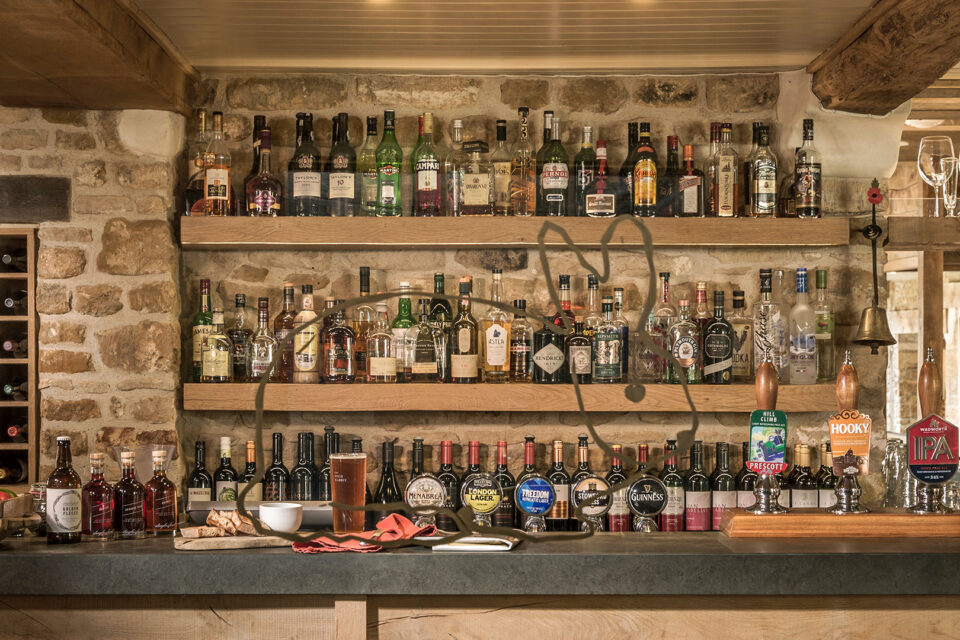Wootton Estate Game Pie Recipe
Head Chef Roger shares a few insights into what makes a proper pie one of the nations most treasured dishes, along with a tried and tested recipe which is perfect for the season.
Pies are a speciality at The Three Horseshoes, what’s the secret to making them so delicious?
It is a staple British classic that gives you a warm hug on colder days and helps bring you to a warm slumber in front of our log fire.
The pastry has to crumble, and the filling needs to have good sized chunks of slowly cooked meat that melt in the mouth.
What produce are you excited about this autumn?
I’ve got to say game is one of the highlights of the season. Having the opportunity to use produce from such a great estate such as our sister farm at Wootton in Staffordshire, is a bonus for a chef.
Shortcrust, puff, choux or filo, what’s the best?
I like to use short crust, as it is stronger in consistency and is less likely to leak so you can make more succulent pies.
How do you avoid a soggy bottom?
We pre-cook the pie filling and chill it down, before adding it to the pastry, this prevents the fat in the pastry from melting before it has a chance to bake. It also means you get a delicious golden crust all over.
What makes the perfect glaze?
I tend to use a whole egg, as the egg white helps give it strength and the yolk gives it a lovely colour.
What is your favourite way to eat a pie?
It depends on the pie, but a typical savoury pie has to be served with creamy mash, some buttery greens and a rich gravy. Sometimes I add a cheeky sprinkle of crispy onions.


Wootton is our sister farm up in Staffordshire. The landscape up there is very different to Daylesford – it’s wild and rugged and less suited to arable farming but we have a wonderful herd of deer. It’s one of the largest herd of organic farmed deer in the country, so venison is something we’ll have on our menu throughout the winter. Our venison is very lean so it works well in a pie, which helps to conserve the moisture in the meat. For the duck we use mallard, which comes from a nearby estate, as this is a smaller duck with a gamier flavour than the milder-tasting Gressingham or Barbary breeds. You need to allow time to make this, as the game meat needs to be marinated overnight, then cooked slowly for 4 hours, and allowed to cool and chill in the fridge for another 2 hours before you assemble the pie. This chilling of the meat might seem excessive, but it is important, because you will have lined your pie dish and rolled out your lid ready to go, then put these into the fridge to chill and relax and so avoid any shrinking in the oven. So if you were to put warm meat into the chilled pie casing it would melt the pastry.
Wootton Estate Game Pie
Ingredients
Makes 1 deep pie
Put the pheasant, duck and rabbit legs into a large bowl with the wine, juniper berries, peppercorns, garlic and one of the sprigs of thyme. Cover and put into the fridge to marinate overnight.
Next day, preheat the oven to 150°C/gas 2.
Lift out the legs from the marinade and pat the meat dry with kitchen paper. Strain the liquid into a bowl and keep to one side. Discard the juniper berries, peppercorns, garlic and thyme.
Season the legs and also the venison. Heat the olive oil in a casserole (one that has a lid), put in the legs and the venison and sauté until browned on all sides. Lift out and keep to one side. Add the onion, celery and carrots and gently soften until browned, stirring occasionally.
Add the marinade and bubble up, scraping all the bits from the bottom of the casserole, until the alcohol has burned off. Return the legs and the venison to the casserole and cover with the chicken stock. Add the rest of the thyme.
Put the lid on the casserole and transfer to the oven for about 4 hours, until the meat is completely tender, and the leg meat is falling away from the bones.
When the meat is tender, remove the casserole from the oven. Lift out all the meat and put it into a bowl to chill slightly (leave the cooking liquor in the casserole). When cool enough to handle, strip the meat from the bones (discard the bones). Keep the meat to one side.
Put the casserole dish containing the cooking liquor on the hob over a medium heat and bubble up to reduce by half. Add the celeriac and cranberries and simmer for 10 minutes, until the cranberries have softened, and the celeriac is tender. Then put back the reserved meat. Stir gently, remove from the heat and leave to cool down, then put into the fridge to chill for 2 hours.
While the meat is chilling, line your pie dish. You need a dish of around 20cm in diameter (or equivalent). Lightly flour your work surface. Take around two-thirds of the pastry (wrap the rest in clingfilm and chill in the fridge) and roll out into the shape of your pie dish, but around 5cm larger. It needs to be about 4mm thick. Wrap the pastry carefully around your rolling pin to lift it, then drop it gently into the dish. Press into the base and sides, leaving a little excess overhanging the edge. Put the dish on a baking tray and chill in the fridge until ready to bake.
For the lid of the pie, lightly flour your work surface again and roll out the remaining pastry into the shape of your dish, but big enough to leave a little overhang – again it should be around 4mm thick. Lay this on a plate or tray and put into the fridge to chill.
When ready to bake, preheat the oven again to 180°C/gas 4. Take the pastry-lined dish from the fridge and spoon in the chilled meat mixture. Place a pie prop in the middle.
Brush the edges of the pastry in the dish with the beaten egg yolk, then wrap the chilled pastry for the lid over your rolling pin and carefully drape it over the top. Press to seal the edges, then trim off the excess pastry. Make a hole in the centre of the pie above the prop and let it push through, then brush all over the pastry lid with the remaining egg yolk.
Put the pie into the oven and bake for 1 hour, or until the pastry is golden brown and the filling is piping hot.





